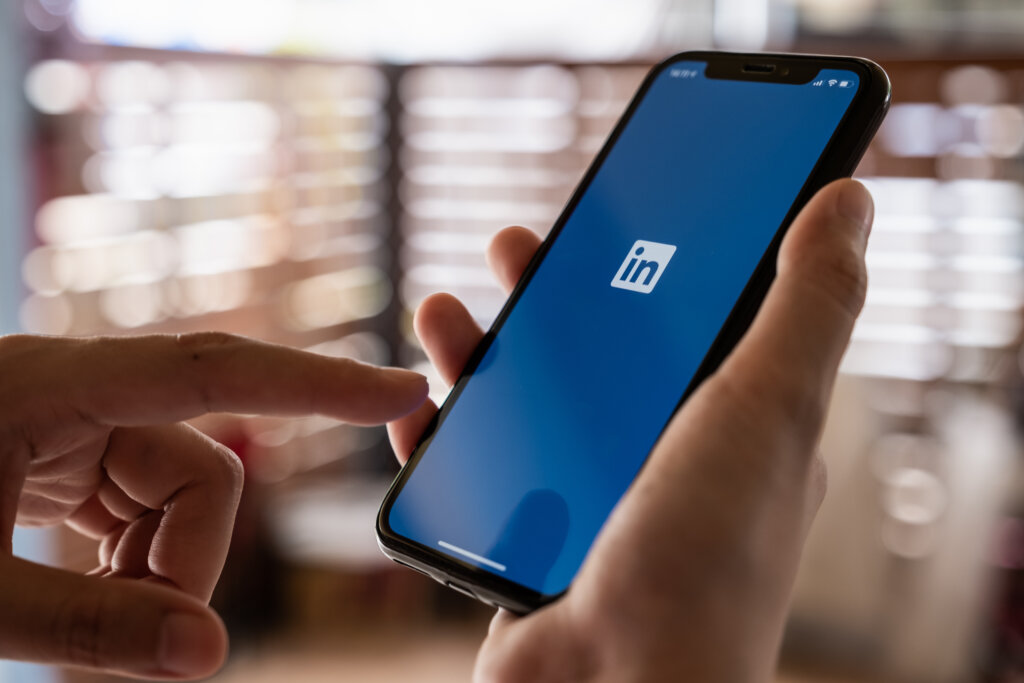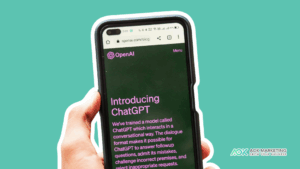In today’s competitive business landscape, businesses and professionals need to leverage the power of LinkedIn to generate leads, build connections, and drive business growth.
This exhaustive guide will walk you through the various features, tools, and best practices for effectively utilizing LinkedIn for lead generation. By implementing these strategies, you can unlock the full potential of LinkedIn to grow your network, attract potential clients, and boost your brand’s visibility.

Setting up Your LinkedIn Profile for Success
An engaging and professional LinkedIn profile is the foundation of your online presence and the first step in generating leads. Follow these tips to create a standout profile:
Profile Photo: Use a high-quality, professional headshot that clearly shows your face. Ensure the background is clean and uncluttered.
Headline: Craft a compelling headline that highlights your expertise, value proposition, or unique selling points. This will help you stand out and effectively convey your message.
Summary: Write a concise, engaging summary that tells your story, showcases your accomplishments, and explains how you can deliver value to potential clients or partners.
Experience: Detail your relevant work experience, along with key achievements and results. Utilize bullet points to make it easy to read and understand.
Skills & Endorsements: Add relevant skills to your profile and request endorsements from colleagues or clients to validate your expertise.
Recommendations: Request recommendations from colleagues, clients, or supervisors who can vouch for your skills and accomplishments. This adds credibility to your profile.
Using keywords and phrases to attract your target audience
Integrating the correct keywords and phrases in your profile will help you attract your target audience and improve your visibility on LinkedIn. To do this:
1. Determine the most relevant keywords for your industry, niche, or target market.
2. Include these keywords throughout your profile, such as in your headline, summary, experience, and skills sections.
3. Use variations or synonyms of your target keywords to improve the possibility of being discovered by potential leads.
4. Optimizing your profile for search rankings
Optimizing your LinkedIn profile for search rankings will help you emerge higher in search results when potential leads are looking for professionals like you. To optimize your profile:
1. Complete all sections of your profile, including education, certifications, and volunteer experiences.
2. Customize your LinkedIn URL to include your name or relevant keywords.
3. Regularly share content and engage with your network to boost your profile’s visibility and authority.
4. Enter relevant LinkedIn Groups and participate in discussions to increase your exposure to potential leads.
Investing time and effort into setting up your LinkedIn profile for success will create a solid foundation for generating leads and growing your professional network.
Building and Nurturing Your Network
We understand the significance of building and nurturing professional networks on LinkedIn. In today’s competitive job market, having a strong network can unlock doors to new opportunities, provide valuable insights, and help you stay ahead in your career.
Here are some tips and strategies to effectively build and nurture your professional network on LinkedIn:
Identifying and Engaging with Potential Connections
1. Look for relevant connections: Start by connecting with people from your industry, alumni from your educational institutions, colleagues, clients, and influencers in your field. Use LinkedIn’s “People You May Know” feature and search filters to find potential connections.
2. Personalize connection requests: When sending connection requests, include a personalized message that introduces yourself, explains why you want to connect, and highlights any common ground you may share.
3. Engage with their content: Once connected, like, comment, and share your connections’ posts to show your interest and appreciation. Offer insightful comments or ask thought-provoking questions to spark conversations and deepen relationships.
Example: If a connection shares an article about the latest marketing trends, you can comment, “Great insights, Jane! I’ve noticed similar trends in my industry as well. Have you found any effective strategies to capitalize on these changes?”
Sharing Valuable Content and Engaging with Your Network
1. Share industry insights: Post articles, news, and updates related to your industry to demonstrate your expertise and provide value to your connections.
2. Create original content: Write articles or videos showcasing your knowledge, experience, and unique perspectives. This will assist to position you as a thought leader in your field and attract more connections.
3. Ask for feedback: Encourage engagement by asking your network for their opinions or advice on specific topics. This fosters interaction and helps you learn from others’ experiences.
Participating in LinkedIn Groups to Cultivate Deeper Relationships
1. Join relevant groups: Find and join LinkedIn Groups related to your industry, profession, or interests. This will expose you to like-minded professionals and potential connections.
2. Be an active participant: Share valuable content, ask questions, and contribute to discussions within the group. This will help you build credibility and rapport with other members.
3. Connect with group members: Send personalized connection requests to group members with whom you’ve had meaningful interactions. This can lead to deeper professional relationships and expanded networking opportunities.
Example: Sarah, a marketing professional, joined several LinkedIn Groups related to her field and actively participated in discussions. She connected with several group members and eventually landed a job at a prestigious agency through one of her new connections.
Following these suggestions and strategies, you can build and nurture a strong professional network on LinkedIn. Remember that networking is an ongoing process, so stay consistent and genuine in your efforts to reap the long-term benefits of your connections.
Utilizing LinkedIn’s Publishing Platform
LinkedIn’s Publishing Platform is an excellent tool for professionals to share valuable content, showcase their expertise, and attract their target audience. By leveraging this feature effectively, you can prove yourself as a thought leader in your industry and create meaningful connections.
Here are some tips on how to make the most of the LinkedIn Publishing Platform:
Sharing valuable content to showcase expertise
1. Share industry insights: Write articles that cover the latest trends, news, or developments in your field. This will demonstrate your knowledge and keep your network informed.
2. Provide actionable advice: Create content that offers practical tips, strategies, or solutions to common challenges faced by your target audience. This adds value to your connections and positions you as a helpful resource.
3. Tell stories: Share personal experiences, case studies, or success stories that highlight your expertise and provide real-world examples of your skills in action.
Attracting your target audience with relevant topics
1. Identify your niche: Determine the specific area of expertise or industry segment you want to focus on to attract your target audience.
2. Research trending topics: Use tools like Google Trends, BuzzSumo, or LinkedIn’s own trending news feed to identify popular topics and keywords within your niche.
3. Create content around these topics: Craft articles that address the interests and pain points of your target audience, tying in your unique perspective and insights.
Encouraging engagement and interaction with your posts
1. Ask questions: Pose thought-provoking questions or invite feedback from your readers to stimulate discussion and interaction.
Include visuals: Incorporate images, videos, or infographics in your articles to make them more engaging and visually appealing.
2. Respond to comments: Make an effort to reply to comments on your articles, acknowledging the input of your readers and fostering deeper connections.
3. Promote your content: Share your articles on other social media platforms, within relevant LinkedIn Groups, or with your personal network to increase visibility and engagement.
By effectively utilizing LinkedIn’s Publishing Platform, you can showcase your expertise, attract your target audience, and encourage engagement with your content. This will not only strengthen your professional brand but also help you forge meaningful connections that can lead to new opportunities and growth.
Implementing LinkedIn Ads
LinkedIn Ads offer a powerful way for businesses and professionals to reach a highly targeted audience on the platform. By implementing LinkedIn Ads effectively, you can drive brand awareness, generate leads, and achieve your marketing goals. Here’s a guide to help you get started:
Exploring different types of LinkedIn ads
Sponsored Content: These are native ads that appear directly in the LinkedIn feed and can be used to promote articles, videos, or images. Sponsored Content is ideal for driving engagement and generating leads through content marketing.
Sponsored InMail: This ad format allows you to send personalized messages directly to the inbox of your target audience. Sponsored InMail is effective for promoting events, product launches, or special offers.
Text Ads: These are small, text-based ads that appear on the side or top of the LinkedIn homepage. Text Ads are suitable for driving website traffic or increasing brand visibility.
Dynamic Ads: Dynamic Ads are personalized display ads that use LinkedIn member data, such as profile photos, job titles, and company names, to create tailored ad experiences. These ads are useful for building brand awareness and driving conversions.
Creating targeted ad campaigns
Define your objectives: Before creating an ad campaign, determine your marketing goals, such as increasing brand awareness, generating leads, or driving website traffic.
Choose the right ad format: Select the LinkedIn ad format that best aligns with your objectives and target audience preferences.
Target your audience: Use LinkedIn’s targeting options to reach a specific audience based on criteria like demographics, job function, industry, company size, and more.
Create compelling ad creatives: Craft engaging ad copy and visuals that resonate with your target audience and convey a clear call to action.
Set your budget and bid: Determine your ad budget, choose between cost-per-click (CPC) or cost-per-impression (CPM) bidding, and set a competitive bid to maximize your ad performance.
Measuring the success of your ads
Monitor campaign performance: Regularly review your LinkedIn Ads dashboard to track key metrics like impressions, clicks, click-through rate (CTR), and conversions.
Analyze engagement: Evaluate how your target audience is engaging with your ads, such as liking, commenting, or sharing your Sponsored Content.
Calculate return on investment (ROI): Measure the ROI of your ad campaigns by comparing the cost of your ads to the value of the leads or conversions generated.
Optimize your campaigns: Based on your performance data, make data-driven adjustments to your ad creatives, targeting options, or bidding strategy to improve the effectiveness of your LinkedIn Ads.
By implementing LinkedIn Ads strategically, you can reach a highly targeted audience, drive engagement, and achieve your marketing objectives. Remember to continuously monitor and optimize your campaigns for the best results.
Best Practices for LinkedIn Lead Generation
LinkedIn is a powerful platform for generating leads and growing your professional network. By following these best practices, you can maximize your LinkedIn lead generation efforts and create meaningful connections with potential clients or partners:
Personalizing connection requests
Introduce yourself: When sending a connection request, briefly introduce yourself and mention any mutual connections or shared experiences.
Explain your reason for connecting: Clearly state the reason why you want to connect, such as sharing similar professional interests, learning from their expertise, or discussing potential collaboration opportunities.
Highlight common ground: If you have any shared experiences, like attending the same conference or participating in the same LinkedIn Group, mention this in your connection request to establish common ground.
Keep it concise: While it’s important to personalize your connection requests, keep them brief and to the point to increase the likelihood of a positive response.
Regularly updating and engaging with your network.
Share valuable content: Regularly post articles, insights, and updates related to your industry to demonstrate your expertise and provide value to your network.
Engage with others’ content: Like, comment on, and share posts from your connections to show your appreciation and interest in their content.
Celebrate successes: Congratulate your connections on their achievements, such as job promotions or work anniversaries, to foster goodwill and strengthen relationships.
Participate in discussions: Join conversations and discussions within your network or in LinkedIn Groups to showcase your knowledge and contribute to the community.
Collaborating with other professionals to expand your reach
Co-create content: Partner with other professionals in your industry to co-author articles, create videos, or host webinars that showcase your combined expertise and provide value to both of your networks.
Cross-promote: Share and promote each other’s content or services to help expand your reach and introduce your connections to new, relevant professionals.
Participate in virtual events: Attend webinars, online conferences, or LinkedIn Live sessions hosted by professionals within your industry to learn from their expertise, engage with their audience, and build relationships with potential leads.
Leverage LinkedIn Groups: Actively participate in LinkedIn Groups related to your industry or professional interests. Engage in discussions, share valuable content, and connect with like-minded professionals to expand your reach and generate leads.
By following these best practices for LinkedIn lead generation, you can effectively build and nurture your professional network, create meaningful connections, and unlock new opportunities for growth. Remember, consistency and genuine engagement are key to successful lead generation on LinkedIn.
Final Thoughts
To maximize your LinkedIn lead generation efforts, remember these key strategies:
-Personalize connection requests by introducing yourself, explaining your reason for connecting, highlighting common ground, and keeping your message concise.
-Regularly update and engage with your network by sharing valuable content, engaging with others’ content, celebrating successes, and participating in discussions.
-Collaborate with other professionals to expand your reach through co-creating content, cross-promoting, participating in virtual events, and actively engaging in LinkedIn Groups.
-Utilize LinkedIn’s premium features, such as Sales Navigator and LinkedIn Ads, to enhance your lead generation efforts with advanced search capabilities, targeted ad campaigns, and personalized InMail messages.
LinkedIn is a powerful platform that offers numerous opportunities to grow your professional network, generate leads, and achieve your career or business goals. By implementing these strategies consistently and genuinely, you can unlock the full potential of LinkedIn and create meaningful connections that drive growth and success.
Start implementing these LinkedIn lead generation strategies today, and watch your network expand, your engagement increase and your opportunities multiply. Remember, consistency and genuine engagement are key to building lasting professional relationships and achieving long-term success on LinkedIn.
About The Author
Dave Burnett
I help people make more money online.
Over the years I’ve had lots of fun working with thousands of brands and helping them distribute millions of promotional products and implement multinational rewards and incentive programs.
Now I’m helping great marketers turn their products and services into sustainable online businesses.
How can I help you?





